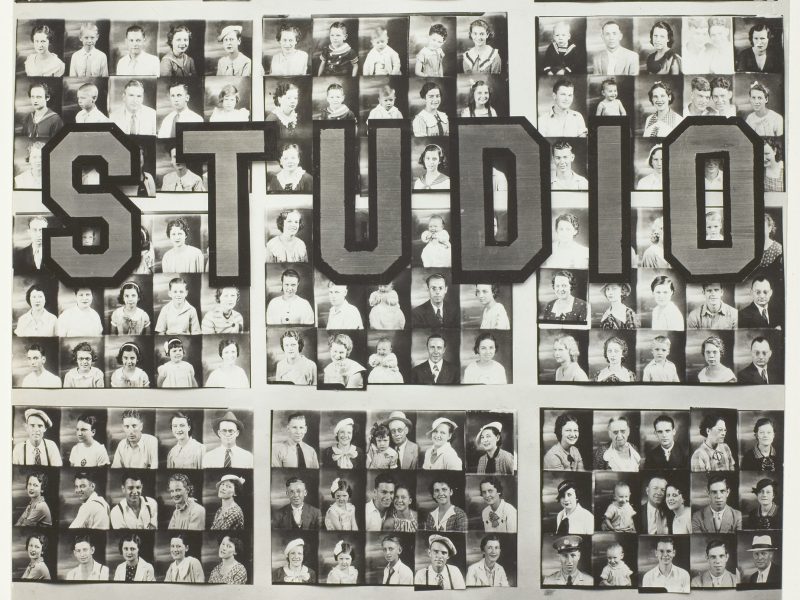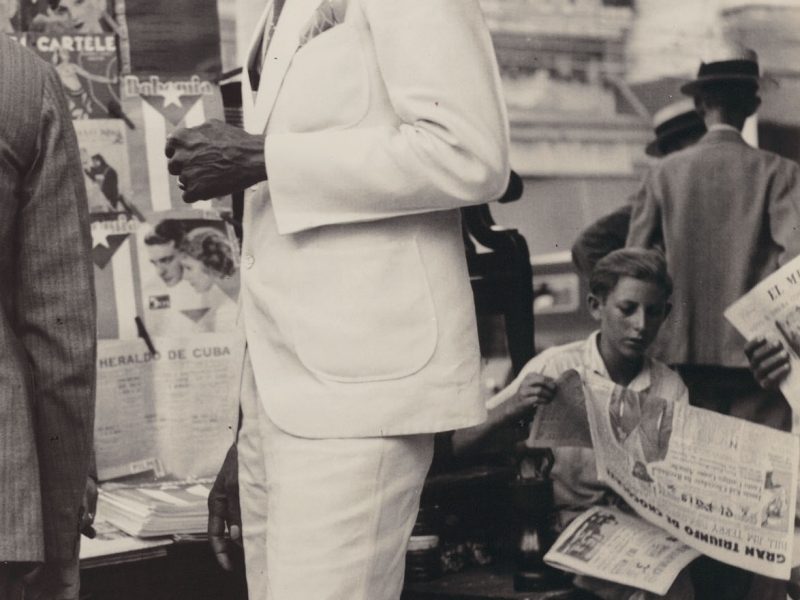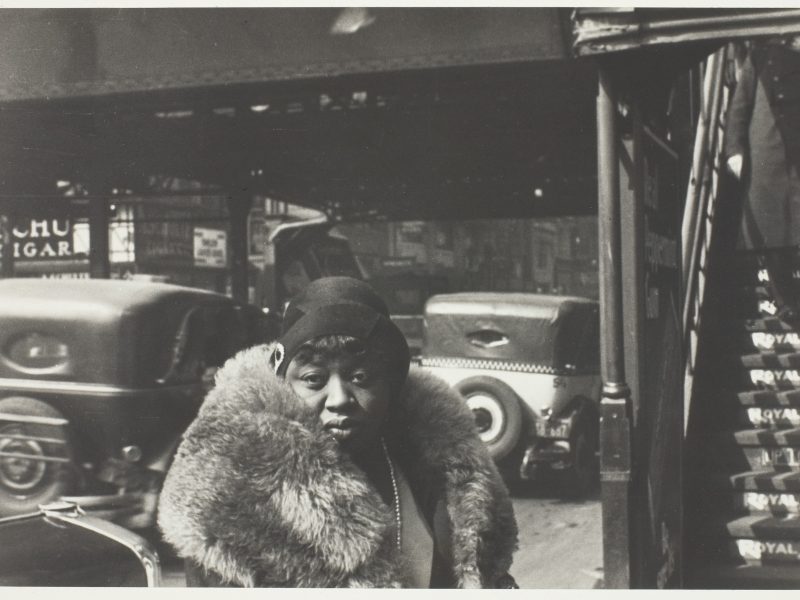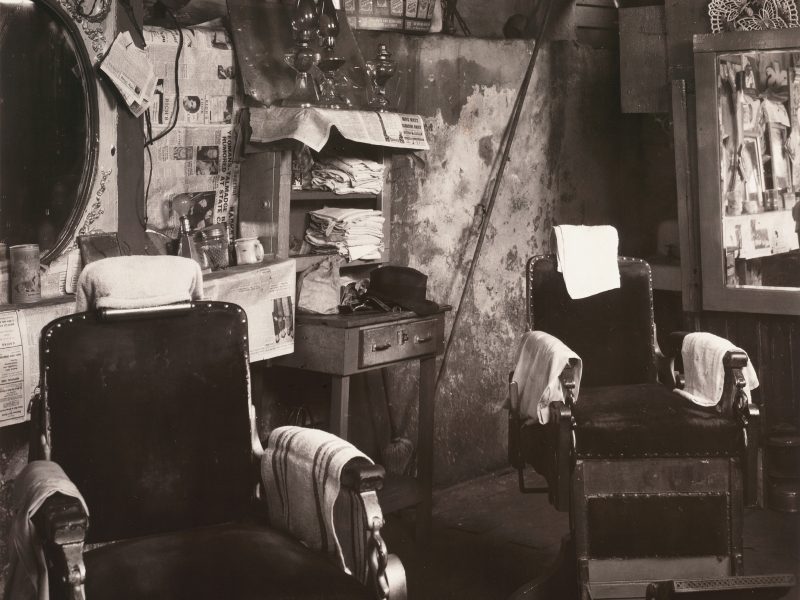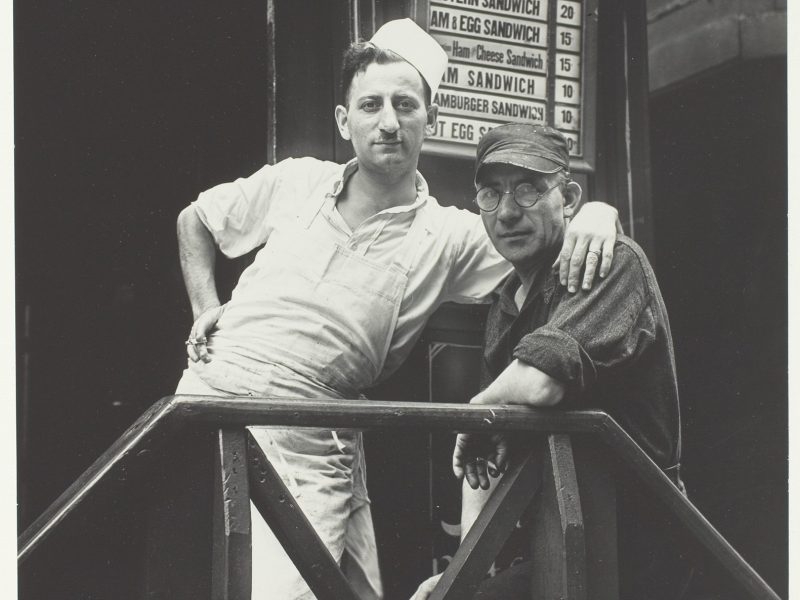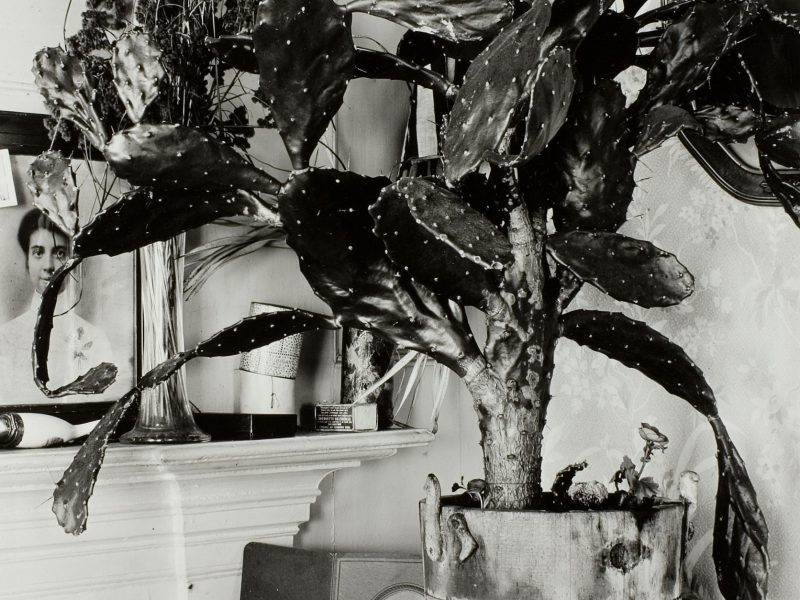Walker Evans
Walker Evans (American, 1903–1975) helped to define a documentary tradition in photography, cataloguing the American scene with a dispassionate approach that was precise yet poetic. From the 1920s until the 1970s—half a century—he captured a wide range of particularly American subjects, from storefronts and hand-painted signs to domestic interiors. Originally intending to be a writer, Evans took up the camera in New York, photographing city scenes and architecture, such as the Brooklyn Bridge. In the 1930s, he was hired by the Resettlement (later Farm Security) Administration to document the government’s impact on those in need during the Great Depression; Evans used his assignments to broaden his great interest in the American vernacular. The photographs he made for the FSA—as well as ones he made when he left the agency to photograph in Alabama for what would become Let Us Now Praise Famous Men (1941)—became iconic images of the era.[1] In 1938 the Museum of Modern Art in New York organized his first one-man exhibition, and the book Evans created to accompany the show, American Photographs, would be a model for dozens of photographers in this country and abroad.[2] In later decades Evans worked independently while also photographing for Fortune magazine and teaching at Yale University.
Hugh Edwards ordered American Photographs mistakenly, thinking it might include Civil War scenes; encountering the book was, he later wrote, a “red letter event in life” that “made the world about me entirely new once more and filled it with marvels.”[3] He often referred to the preface by Lincoln Kirstein, who became a close friend, as a model for writing on photography. For Edwards, Evans was a key link in a chain of American realist photography that began with Lewis Hine and continued through the work of W. Eugene Smith and Robert Frank. He began corresponding with the photographer as early as 1948, when, still a curator of prints and drawings, he purchased an Evans photograph for his own collection; Edwards could finally add to the museum’s holdings in 1962, asking Evans to offer for sale thirty early works he considered especially significant. (That acquisition, which called upon Evans for the first time to survey his initial decade of production from a retrospective viewpoint, seems to have been notable for the photographer as well. Evans produced two portfolios in the later 1960s and 1970s, both classics in their own right, and it is remarkable how many images from the Edwards acquisition are in these selections.) In 1964 Edwards mounted a show focusing on Evans’s more recent photographs. The two stayed in touch regularly throughout the 1960s, and Edwards conveyed his unabashed enthusiasm to the photographer in his letters. “For some time now I have been certain you are the only photographer who ever lived,” he wrote in 1966. “It is privilege enough to have you in the world and be in it at the same time.”[4]
[1] Walker Evans and James Agee, Let Us Now Praise Famous Men: Three Tenant Families (Houghton Mifflin, 1941).
[2] Walker Evans, American Photographs, with a preface by Lincoln Kirstein, exh. cat. (Museum of Modern Art, New York, 1938).
[3] Edwards, “Some Experiences with Photography,” Contemporary Photographer 4, 4 (Fall 1963), p. 5.
[4] Edwards to Walker Evans, Sept. 20, 1966, Institutional Archives, Art Institute of Chicago.
